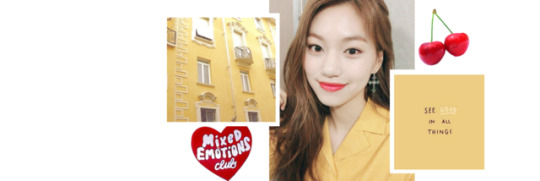#Kinsenka
Explore tagged Tumblr posts
Text
Today's Haiku with Picture 423

Kinsenka
It's orange
A glossy flower
金盞花(きんせんか)
オレンジ色の
艶花かな
Pot marigold.
(2023.02.18)
1 note
·
View note
Text
Bushiroad Games and Frontwing announce visual novel Perennial Dusk: Kinsenka for PC - Gematsu

Publisher Bushiroad Games and developer Frontwing have announced visual novel Perennial Dusk: Kinsenka for PC. It will launch in 2025 with English, Japanese, and Simplified Chinese language support.
Here is an overview of the game, via its official website:
About
Industry veteran Yukito Urushibara and prolific illustrator Saine join forces for the first time to craft a stunning tale about a group of young people in an eerie world of endless twilight. Follow their story as they struggle against limitless cruelty and confront the inescapable traumas of life and death together. Perennial Dusk: Kinsenka is the latest visual novel written by Yukito Urushibara, whose work on Irotoridori no Sekai and Sakura Moyu captivated players with stories that inspire hope as readily as they induce despair. The cast of colorful-yet-broken characters is brought to life by Saine, whose experience as the illustrator of various Vocaloid music videos (“mikitoP “Kunoichi demo Koi ga shitai”) and as a VTuber designer (“Kamishiro Kurea,” “Watagashi Unou,” “Hoshikage Lapis,” and “Kozuya Nano” among others) lets the delicate twilight world bloom with a resplendent touch.
Story
The human heart is but a vessel for pain. That’s what someone once whispered-a voice laced with loneliness, whispering directly into the soul. It’s an indescribable sadness, a love just beginning to bloom. It becomes an invisible pain that pierces the heart. And that’s what makes up life: a cyclical series of highs and lows. Tachibana Sai was born without the ability to feel pain in his heart. He spends his days eliminating any seeds of malice that sneak up on his sister, the one person he treasures, without drawing attention to himself. Sick of the never ending monotony he lives through, he chances upon a meeting with Benio Matsuri, a young girl whose aloof demeanor resembles that of a beautifully crafted doll. For the first time in his life, he encounters a heart piercing sensation that of falling in love. On the edge between day and night, in a twilight world where the dead and living mingle, stands an apartment building called Maison sans Nom, which is home to a group of boys and girls. A ruthless boy who knows no pain in his heart. A lonely girl without any friends. A friendly girl who struggles to make connections. A prickly, ambitious girl who is keen to be of help. A boy who loves his own cute self above anything else. A mess of a woman who tries to solve everything through brute force. And a boy with a tender heart who knows no pain in his body. This ill-assorted group of residents, hands stained with blood from battling the supernatural Maledicts, shall encounter the hearts they never knew and begin nurturing their souls. The human heart is but a vessel for pain. To protect this pain akin to love… To gently break the world apart, piece by piece… Even if it means abandoning humanity. That’s why the heart is but a vessel for pain. For life blazes brilliantly, while the heart goes around in an endless cycle.
Characters
Benio Matsuri (voiced by Manaka Iwami) – A girl born into the Benio Family, a powerful family of Maledict Exorcists, who is tightly bound by her family’s curse. Due to an incident in the past, causing her to close off her heart, she doesn’t speak and barely shows any emotion. Her eyes remain closed at all times, as if she wishes to isolate herself from the cruel world she lives in. Since she only moves when someone pulls her along by the hand, her demeanor evokes the image of a beautifully crafted doll. She is a Curse Bearer with the ability to give Maledicts form and use their powers freely.
Nobody (voiced by Manaka Iwami) – Another personality that dwells inside Benio Matsuri’s heart that appears when Matsuri is asleep. Nobody sees herself as a shield that protects Matsuri from the cruel world. She can be incredibly selfish, and her words, actions, and strong attitude cause her to come across as a haughty, ill-mannered girl.
Tachibana Sai (voiced by Yumiri Hanamori) – The protagonist of the story: A ruthless boy who cannot feel pain in his heart. His younger sister, his only family, is the one person he treasures, and anyone who torments her is met with a brutal end by his hands… Yet, yearning to understand the human heart, he often interrogates his victims, even though they cannot respond. Just as he begins to seek respite from his bleak life, his unexpected encounter with Benio Matsuri causes him to experience a kind of pain akin to love in his heart.
Kanbara Tatsuki (voiced by Shuta Morishima) – An earnest and sincere boy who was born with a body that doesn’t feel any physical pain. Despite the unjust world around him, he wishes to keep on the straight and narrow, even if no one else does. He began training at a young age under a master who claimed to be invincible in order to become… well, a certain something. He has infiltrated the Benio Family and is biding his time for the chance to free Benio Matsuri, his first love, from their curse.
Tsukahara Ao (voiced by Hitomi Sasaki) – A seemingly cheerful and sociable resident of Maison sans Nom. She’s especially close with her friend Ando Mémé. Born as a Curse Bearer, she works as one of the Benio Family’s mercenaries and exorcists. On top of her mischievous tendencies, she wants more than anything to be a housewife. Her cooking might not be up to par now, but she’s working on it.
Ando Meme (voiced by Hika Tsukishiro) – A surly resident of Maison sans Nom and a Curse Bearer like Ao. Despite her ambitious and hard-working nature, she tends to scare people off due to her prickly attitude. However, she is keener than anyone when it comes to helping her friends, and Ao is especially reliant on her companionship. Her goal in life is to rake in the money as a top-grade exorcist.
Kirishima Tsuyu (voiced by Yukina Shuto) – The landlord of Maison sans Nom. Tsuyu is obsessed with his own cuteness and habitually declares himself the cutest person in the world. He enjoys teasing the other residents, and while they get annoyed with Tsuyu’s antics sometimes, they still adore him. He often earns himself a spanking from Yozora. He is also a content creator who makes full use of his looks while livestreaming as “Chuyu.” He has a preference for strong-willed people and takes a particular liking to Tatsuki in this regard. A Curse Bearer like Ao and Mémé, he possesses a mysterious power.
Kandori Yozora (voiced by Hana Kuga) – As the only grown-up resident of Maison sans Nom, Yozora acts as the guardian of the younger residents. She appears to be a beautiful, classy lady… until she opens her mouth. With her frank and outspoken attitude, as well as her tendency to drink cheap booze, gamble on horses, and “borrow” money from the kids without ever returning it, she’s not exactly what one would consider a responsible adult. Yozora does not possess any Maledict powers, but she prides herself on being the strongest martial artist in the world.
Benio Tsui (voiced by Takako Tanaka) – The current head of the Benio Family and Matsuri’s younger sister. Contrary to her appearance as a young girl, she considers herself the matriarch of the family, referring to all its members as her “children,” regardless of blood relations. Inside her heart dwells three different personalities, each with their own quirks and caprices. All are cold, cruel, and ruthless by nature, although she sometimes displays a child-like innocence befitting her age.
Penguin (voiced by Reika Fujisawa) – A mysterious, smartly dressed penguin with the ability to understand and speak human language. However, it is painfully shy, so normally it pretends to be just a regular penguin. It works as a receptionist and bellhop at a hotel where the souls of the dead end up, so the younger residents of Maison sans Nom refer to it as “God.” It has a huge attitude for a cute little penguin and is extremely hard to please. The best way to buy its favor is with sweets and snacks.
…and others!
Main Staff
Planning / Story: Yukito Urushibara
Character Design / Art: Saine
Developer: Frontwing
Background Music: Fuminori Matsumoto, Hitoshi Fujima (Elements Garden)
Theme Song
Title: “Anata no Kioku no Naka de” (“In Your Memories”)
Vocals: Mao Uesugi
Lyrics: Yoshikazu Kuwashima
Composition and Arrangement: Hitoshi Fujima (Elements Garden)
Watch the announcement trailer below.
Announce Trailer
youtube
8 notes
·
View notes
Text

姫金盞花[Himekinsenka] Calendula arvensis
姫[Hime] : Princess; small and adorable
金[Kin] : Gold
盞[Sen] : Small Sakazuki(Sake cup)
花[Ka] : Flower
Kinsenka is somewhat complicated.
金盞花 is a Japanese name for Pot Marigold(C. officinalis). Himekinsenka is also called 本金盞花[Hon-](in this case, 本 means main or real) because this was introduced to our country earlier than Kinsenka. And this also has an alias of 冬不知|冬知らず[Fuyushirazu]. Kinsenka has a flower diameter of about six to ten centimeters, whereas that of Himekinsenka is about one or two centimeters. Both are native to the Mediterranean region.
And, the 57th of 七十二候[Shichijūni-kō](The 72 micro seasons subdivided into small terms based on 二十四節気[Nijūshi-sekki], the 24 solar seasons) is 金盞香[Kinsenka saku](Kinsenka begins to bloom; in 2025, November 17 to 21), and this Kinsenka means 水仙[Suisen](Narcissus tazetta).
Incidentally, yesterday, January 20, was the first day of 大寒[Daikan](lit. the great cold; the coldest time of the year) in Nijūshi-sekki and 款冬華[Fuki no hana saku](Butterburs sprout buds) in Shichijūni-kō. https://en.wikipedia.org/wiki/Dahan_(solar_term)
16 notes
·
View notes
Text

金盞花のマナ | Kinsenka no Mana 🌼 Mana of the Marigold
Birthday: December 13 Gender: Female Blood type: B Kekkei Genkai: Wood Release Classification: Medic Ninja Affiliation: Sunagakure
🌼 Her father was from Suna and her mother was originally from Yukigakure. She got her personality from her father and her features from her mother.
🌼 Mana lost her parents on a mission. She had no other relative so she raised herself from a very young age.
🌼 She discovered her aptitude for chemistry in an early age after crafting poisons for missions. Simultaneously, she learned medical ninjutsu after studying what her poisonous concoctions do to a human body.
🌼 Mana runs a small apothecary in Suna when she's not on missions as a side hustle. She grows the herbs she uses in her own garden.
🌼 She's a clumsy bubbly girl who prefers living in the moment rather than worry about the past or the future.
🌼 Mana loves beef curry with rice. Its the last meal her mother cooked before she never saw her again.
🌼 She also likes sweets like Warabi mochi and Custard flans.
10 notes
·
View notes
Text
The Komuso Traveler in the Onmyodo Card Game

One of many unique Travelers that you can meet in the Onmyodo Game, the Komuso are famous Buddhist monks with musical ability! Adorned with their iconic head baskets and playing shakuhachi flutes, the Komuso maintained hidden identities and performed musical Zen Buddhist rituals of meditation.
This 'Monk of Nothingness' is a quite versatile and useful member of any traveling group in the game, with high value in most Traits.
His soothing presence alone grants an Empathy bonus to all of the other group members! If defeated, the Komuso dies, but not before passing his Grace points to the remaining group.
GAME TIP:
During the microseason of Kinsenka Saku, December 2nd through 6th, Musical Travelers such as the Komuso cannot be Attacked!
#komuso#buddhist#zen buddhism#abe no seimei#onmyoji#solo card game#shakuhachi#japanese monk#japanese folklore#edo period#ofuda#yokai
2 notes
·
View notes
Photo

Bushiroad Games and Frontwing announce visual novel Perennial Dusk: Kinsenka for PC Publisher Bushiroad Games and developer Frontwing have announced visual novel Perennial Dusk: Kinsenka for PC. It will launch in 2025 with English, Japanese, and Simplified Chinese language support. H... https://blog.gplayr.com/bushiroad-games-and-frontwing-announce-visual-novel-perennial-dusk-kinsenka-for-pc/ #Bushiroad #BushiroadGames #Clips #Frontwing #GameAnnounce #PC #PerennialDuskKinsenka #Trailers #VisualNovel
0 notes
Video
youtube
A cover of Hiiragi Kirai’s “Bocca Della Verita”. A UST download is available in the description.
4 notes
·
View notes
Photo

#キンセンカ #Kinsenka #カレンデュラ #Calendulaofficinalis #Calendula #金盞花 #flower #花 #花壇 #flowerbed #Japan #日本 #千葉県 #Chibaken #柏市 #Kashiwa #ivvaDOTinfo #ivva (Kashiwa) https://www.instagram.com/p/CcshbYgPqDe/?igshid=NGJjMDIxMWI=
#キンセンカ#kinsenka#カレンデュラ#calendulaofficinalis#calendula#金盞花#flower#花#花壇#flowerbed#japan#日本#千葉県#chibaken#柏市#kashiwa#ivvadotinfo#ivva
0 notes
Photo

Marigold (Kinsenka) and Rashomon Flowers, from the series "Collection of Plants for the Kasumi Poetry Circle (Kasumi-ren somoku awase)", Kubo Shunman, 1810, Art Institute of Chicago: Asian Art
Clarence Buckingham Collection Size: 19.2 x 16.1 cm Medium: Color woodblock print; shikishiban, surimono
https://www.artic.edu/artworks/23378/
153 notes
·
View notes
Photo

Pot Marigold (Kinsenka) and Rashōmon Flowers (Rashōmon), from the series An Array of Plants for the Kasumi Circle (Kasumi-ren sōmoku awase), Kubo Shunman, circa 1804-1815, Harvard Art Museums: Prints
Poem by Hoshiawase Hamahagi Harvard Art Museums/Arthur M. Sackler Museum, Gift of the Friends of Arthur B. Duel Size: shikishiban: H. 20.6 × W. 18 cm (8 1/8 × 7 1/16 in.) Medium: Woodblock print (surimono); ink and color on paper
https://www.harvardartmuseums.org/collections/object/208150
2 notes
·
View notes
Photo

Yamamura Misa Suspense: Kinsenka Kyō Ezara Satsujin Jiken (TurboGrafx CD), 1992.
#abandonware#gaming#video games#retro games#old games#90s#90s games#city#japan#lights#vaporwave#retrowave#aesthetic#pixel art#naxat soft#tose co
392 notes
·
View notes
Text

姫金盞花[Himekinsenka] Calendula arvensis
It is native to the Mediterranean area, was introduced in the Edo period(1603-1868) and is partially naturalized today.
金盞花[Kinsenka] is the name given to the pot marigold(Calendula officinalis.) 金[kin] means gold. 盞[Sen] is also read as sakazuki and means small cup for alcoholic beverages. 花 means flower. The adjective 姫, which means princess or young lady of noble birth, was given as the small type of Kinsenka.
It also has several other aliases. 本金盞花[Hon-]. Because it came in earlier than Kinsenka. 本 in this case means main, real or regular. 冬咲金盞花[Fuyuzaki-] and 冬不知[Fuyushirazu]. Because it blooms even in the coldest months. 冬[Fuyu] means winter, 咲[-zaki] means blooming. 不知[Shirazu] means to do not know. https://en.wikipedia.org/wiki/Shiranui_(disambiguation)
19 notes
·
View notes
Photo










like or reblog if you save | icons © @wannaonetwt & headers © @twiggroups, @idolstuffz, @kinsenka
#packs#wanna one#wanna one icons#wanna one packs#daniel#kang daniel#daniel icons#daniel packs#weki meki#weki meki headers#wekimeki packs#doyeon#doyeon headers#doyeon packs#mars
99 notes
·
View notes
Photo










JONGHYUN + DOYEON
icons © odd-kpop editkidols ickurxna kreditz
headers © twiggroups idolstuffz kinsenka
*ೃ● like if you save / use ✿
#kim jonghyun#kim doyeon#jonghyun icons#icons jonghyun#jonghyun icon#kim jonghyun icons#kim jonghyun icon#shinee icons#shinee icon#doyeon headers#headers doyeon#doyeon header#kim doyeon headers#headers kim doyeon#kim doyeon header#kpop icons#kpop icon#kpop headers#kpop header#kpop packs#kpop pack#packs kpop#angel
233 notes
·
View notes
